So wechseln Sie von einer Lithium-Ionen-Batterie zu einer LiFePO4-Batterie
In der sich ständig weiterentwickelnden Welt der Energiespeicherung suchen Verbraucher und Industrie gleichermaßen ständig nach besseren Optionen für nachhaltige und effiziente Energielösungen. Während Lithium-Ionen-Batterien seit langem der Standard für eine Vielzahl von Anwendungen sind, erfreuen sich LiFePO4-Batterien (Lithium-Eisenphosphat) aufgrund ihrer Sicherheit, Langlebigkeit und Umweltfreundlichkeit zunehmender Beliebtheit. Dieser Artikel führt Sie durch den Umstieg von einer Lithium-Ionen-Batterie auf eine LiFePO4-Batterie und beleuchtet die Unterschiede, Vorteile und praktischen Überlegungen für einen reibungslosen Übergang.
- Was Sie über Lithium-Ionen-Batterien wissen müssen
- Warum LiFePO4-Batterien wählen?
- So wechseln Sie von einer Lithium-Ionen-Batterie zu einer LiFePO4-Batterie
- Häufige Herausforderungen beim Umstieg auf LiFePO4-Batterien.
Was Sie über Lithium-Ionen-Batterien wissen müssen
Lithium-Ionen-Akkus bilden das Rückgrat vieler moderner Technologien, von Smartphones bis hin zu Elektrofahrzeugen. Diese Akkus funktionieren, indem Lithium-Ionen während des Lade- und Entladevorgangs zwischen Kathode und Anode transportiert werden. Ihre Hauptvorteile sind die hohe Energiedichte, das geringe Gewicht und die kompakte Größe. Lithium-Ionen-Akkus bergen jedoch auch gewisse Risiken. Sie neigen zur Überhitzung, können mit der Zeit an Leistung verlieren und können bei Beschädigung oder unsachgemäßer Handhabung Sicherheitsrisiken bergen.
Die Risiken von Lithium-Ionen-Batterien
Trotz ihrer weiten Verbreitung weisen Lithium-Ionen-Batterien mehrere Nachteile auf:
- Sicherheitsbedenken: Bei hohen Temperaturen, Überladung oder physischer Beschädigung kann es bei Lithium-Ionen-Batterien zu einem thermischen Durchgehen kommen, das zu Bränden oder Explosionen führen kann.
- Begrenzte Lebensdauer: Lithium-Ionen-Akkus sind zwar langlebig, verlieren jedoch nach mehreren hundert Ladezyklen an Kapazität und müssen ersetzt werden.
- Auswirkungen auf die Umwelt: Die Gewinnung von Materialien wie Kobalt und Lithium hat erhebliche Auswirkungen auf die Umwelt und die unsachgemäße Entsorgung von Lithium-Ionen-Batterien kann Ökosysteme schädigen.
Angesichts dieser Einschränkungen suchen viele Menschen nach Alternativen, die mehr Sicherheit und eine länger anhaltende Leistung bieten – und hier kommen LiFePO4-Batterien ins Spiel.
>>Siehe auch So setzen Sie die Batterie Ihres Hoverboards zurück
Warum LiFePO4-Batterien wählen?
LiFePO4-Batterien sind eine sicherere, langlebigere und umweltfreundlichere Alternative zu Lithium-Ionen-Batterien. Wir erläutern die wichtigsten Gründe für einen Umstieg.
Sicherheitsvorteile von LiFePO4-Batterien
Einer der größten Vorteile von LiFePO4-Batterien gegenüber Lithium-Ionen-Batterien ist ihre höhere Sicherheit. LiFePO4-Batterien fangen deutlich seltener Feuer oder überhitzen. Dies liegt daran, dass Lithiumeisenphosphat eine stabile Verbindung ist, die nicht unter den Problemen des thermischen Durchgehens leidet, die bei anderen lithiumbasierten Chemikalien auftreten können. Darüber hinaus sind LiFePO4-Batterien resistent gegen Überladung, Kurzschlüsse und andere potenziell gefährliche Bedingungen und eignen sich daher ideal für risikoreiche Anwendungen wie Elektrofahrzeuge und die Energiespeicherung zu Hause.
Längere Lebensdauer
Ein weiterer großer Vorteil von LiFePO4-Batterien ist ihre beeindruckende Lebensdauer. Während Lithium-Ionen-Batterien typischerweise zwischen 500 und 1.000 Ladezyklen halten, können LiFePO4-Batterien 2.000 bis 3.000 Ladezyklen oder mehr durchhalten. Das bedeutet, dass LiFePO4-Batterien eine längerfristige Lösung bieten, die den Bedarf an häufigen Austauschvorgängen reduziert und Ihnen letztendlich langfristig Geld spart.
Umweltfreundlichkeit
LiFePO4-Batterien sind zudem umweltfreundlicher als Lithium-Ionen-Batterien. Sie enthalten keine giftigen Stoffe wie Kobalt oder Nickel, die in vielen Lithium-Ionen-Batterien enthalten sind. Darüber hinaus weist der Herstellungsprozess von LiFePO4-Batterien einen geringeren CO2-Fußabdruck auf, was sie insgesamt zu einer umweltfreundlicheren Wahl macht. Dies ist ein wichtiger Aspekt für umweltbewusste Verbraucher und Unternehmen, die ihre ökologischen Auswirkungen reduzieren möchten.
Hohe Effizienz und thermische Stabilität
LiFePO4-Batterien zeichnen sich durch einen hohen Lade-/Entladewirkungsgrad aus, was bedeutet, dass sie die gespeicherte Energie besser speichern und nutzen können. Sie funktionieren auch in einem breiten Temperaturbereich gut, insbesondere im Vergleich zu Lithium-Ionen-Batterien, die bei extremer Hitze oder Kälte Probleme haben können. Dies macht LiFePO4-Batterien zu einer ausgezeichneten Wahl für netzunabhängige Energiesysteme und Elektrofahrzeuge, die eine zuverlässige Leistung bei unterschiedlichen Wetterbedingungen benötigen.
So wechseln Sie von einer Lithium-Ionen-Batterie zu einer LiFePO4-Batterie
Nachdem Sie nun die Vorteile von LiFePO4-Batterien kennen, sehen wir uns den Umstieg von einer Lithium-Ionen-Batterie auf eine LiFePO4-Batterie genauer an. Der Vorgang kann je nach Anwendung (Elektrofahrzeug, Solaranlage, tragbare Elektronik usw.) variieren, die allgemeinen Schritte sind jedoch recht ähnlich. So gelingt Ihnen der Umstieg reibungslos.
Schritt 1: Bewerten Sie Ihren Batteriebedarf
Bevor Sie mit dem Austausch beginnen, sollten Sie Ihren spezifischen Leistungs- und Kapazitätsbedarf ermitteln. LiFePO4-Batterien sind in verschiedenen Größen und Spannungen erhältlich. Wählen Sie daher eine Batterie, die den Leistungsanforderungen Ihres Systems entspricht. Beachten Sie dabei folgende Faktoren:
- Spannung: Stellen Sie sicher, dass die Spannung des LiFePO4-Akkus den Anforderungen Ihres Geräts oder Systems entspricht. Die meisten LiFePO4-Akkus haben eine Spannung von 3,2 V pro Zelle, während Lithium-Ionen-Akkus typischerweise 3,7 V pro Zelle haben.
- Kapazität (Ah): LiFePO4-Batterien haben im Vergleich zu Lithium-Ionen-Batterien tendenziell eine etwas geringere Energiedichte. Stellen Sie sicher, dass die Kapazität Ihrer neuen Batterie die erforderliche Leistung für Ihr System liefert.
- Physische Größe: Da LiFePO4-Batterien tendenziell größer und schwerer sind als ihre Lithium-Ionen-Gegenstücke, prüfen Sie, ob die Batterie in den dafür vorgesehenen Platz passt.
Schritt 2: Stellen Sie die Kompatibilität mit Ihrem Ladesystem sicher
LiFePO4-Akkus benötigen ein anderes Ladeprofil als Lithium-Ionen-Akkus , was bedeutet, dass Ihr vorhandenes Ladegerät möglicherweise nicht kompatibel ist. LiFePO4-Akkus benötigen typischerweise eine Ladespannung von 3,65 V pro Zelle, während Lithium-Ionen-Akkus oft eine Spannung von etwa 4,2 V pro Zelle benötigen. Um Über- oder Unterladung zu vermeiden, müssen Sie entweder ein neues Ladegerät für LiFePO4-Akkus kaufen oder einen Laderegler verwenden, der beide Akkutypen unterstützt.
Schritt 3: Trennen und entfernen Sie den Lithium-Ionen-Akku
Im nächsten Schritt wird der Lithium-Ionen-Akku abgeklemmt und entfernt. So geht's:
- Schalten Sie Ihr Gerät aus: Stellen Sie sicher, dass Ihr Gerät vollständig ausgeschaltet ist, bevor Sie mit dem Entfernen des Akkus beginnen.
- Batteriepole abklemmen: Trennen Sie vorsichtig den Plus- und Minuspol der Lithium-Ionen-Batterie. Achten Sie darauf, welcher Pol positiv und welcher negativ ist.
- Entfernen Sie die alte Batterie: Sobald die Anschlüsse getrennt sind, entfernen Sie die Lithium-Ionen-Batterie vorsichtig aus ihrem Fach.
Schritt 4: Installieren Sie die LiFePO4-Batterie
Jetzt ist es an der Zeit, die LiFePO4-Batterie einzubauen. Gehen Sie dazu folgendermaßen vor:
- Positionieren Sie die neue Batterie: Legen Sie die LiFePO4-Batterie in das Batteriefach und achten Sie darauf, dass sie sicher sitzt.
- Anschlüsse verbinden: Verbinden Sie den Pluspol des LiFePO4-Akkus mit dem Pluspol des Gerätes und den Minuspol mit dem Minuspol.
- Sichern Sie die Batterie: Wenn die LiFePO4-Batterie größer oder schwerer als die Lithium-Ionen-Batterie ist, verwenden Sie die mit der Batterie gelieferten Montagehalterungen oder -gurte, um sie an ihrem Platz zu halten.
Schritt 5: Testen und Überwachen des Systems
Sobald der LiFePO4-Akku installiert ist, schalten Sie Ihr Gerät ein und überprüfen Sie seine Funktionalität. Überwachen Sie die Lade- und Entladezyklen in den ersten Wochen, um sicherzustellen, dass alles ordnungsgemäß funktioniert. Achten Sie auf Unregelmäßigkeiten bei Ladezeiten, Leistungsabgabe oder Akkutemperatur. LiFePO4-Akkus funktionieren im Allgemeinen gut, dennoch ist es immer gut, den reibungslosen Betrieb zu überprüfen.
Schritt 6: Lithium-Ionen-Akku ordnungsgemäß entsorgen
Wenn Sie Ihren Lithium-Ionen-Akku austauschen, entsorgen Sie ihn bitte ordnungsgemäß. Lithium-Ionen-Akkus können umweltschädlich sein und dürfen nicht im Hausmüll entsorgt werden. Informieren Sie sich über lokale Recyclingprogramme oder Sammelstellen, wo Sie Ihren alten Akku sicher recyceln können.
>>Siehe auch: Können Sie eine 12-V-Prius-Batterie aufladen? Eine umfassende Anleitung
Häufige Herausforderungen beim Umstieg auf LiFePO4-Batterien
Obwohl die Umstellung auf LiFePO4-Batterien zahlreiche Vorteile bietet, sind einige Herausforderungen zu berücksichtigen:
Batteriegröße und -gewicht
LiFePO4-Batterien sind im Allgemeinen größer und schwerer als ihre Lithium-Ionen-Pendants. Wenn Platz oder Gewicht ein Problem darstellen, müssen Sie Ihr Gerät oder Energiesystem möglicherweise an die neue Batterie anpassen.
Ladesystemkompatibilität
Wie bereits erwähnt, benötigen LiFePO4-Batterien ein anderes Ladeprofil. Wenn Ihr vorhandenes Ladegerät nicht kompatibel ist, müssen Sie in ein neues Ladegerät investieren, was die Gesamtkosten des Wechsels erhöhen kann.
Anschaffungskosten
Während LiFePO4-Batterien in der Regel im Anschaffungspreis höher sind als Lithium-Ionen-Batterien, können sie aufgrund ihrer längeren Lebensdauer und verbesserten Leistung auf lange Sicht kostengünstiger sein.
Der Umstieg von einer Lithium-Ionen-Batterie auf eine LiFePO4-Batterie ist eine hervorragende Entscheidung für alle, die die Sicherheit, Langlebigkeit und Umweltverträglichkeit ihrer Energiesysteme verbessern möchten. Obwohl der Prozess sorgfältige Planung und Anpassungen erfordert, überwiegen die Vorteile von LiFePO4-Batterien die Herausforderungen bei weitem. Dank verbesserter thermischer Stabilität, längerer Lebensdauer und geringerer Umweltbelastung sind LiFePO4-Batterien die intelligentere Wahl für eine Vielzahl von Anwendungen, von Elektrofahrzeugen bis hin zur Speicherung von Solarenergie.
Der Umstieg ist unkompliziert, solange Sie die Kompatibilität sicherstellen, die korrekte Installation befolgen und alle notwendigen Faktoren berücksichtigen. Ob Sie die Batterie in einem Elektrofahrzeug, einem Solarspeichersystem oder anderen Geräten austauschen, LiFePO4-Batterien bieten eine zuverlässige und effiziente Alternative zu herkömmlichen Lithium-Ionen-Batterien . Wenn Sie bereit für den Umstieg sind, investieren Sie in eine Batterie mit außergewöhnlicher Leistung und Langlebigkeit.

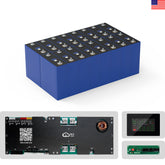

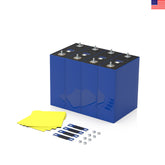
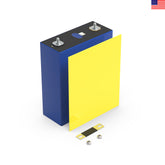
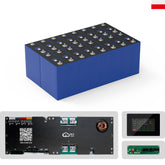

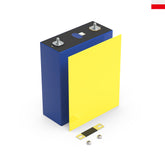

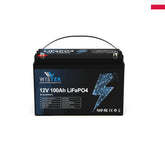
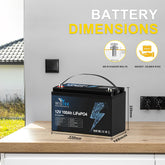
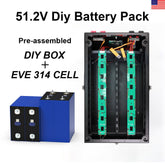

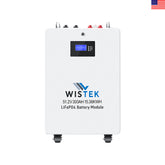
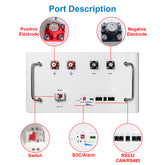
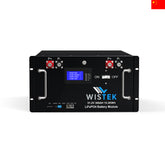
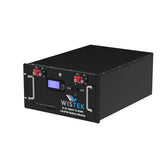


Leave a comment
All blog comments are checked prior to publishing